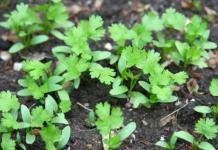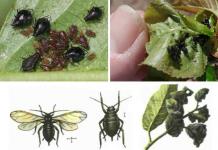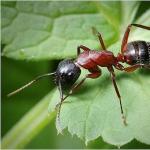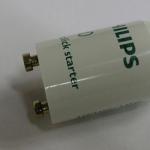True gourmets know first-hand about coriander, because not everyone likes its specific aroma. But connoisseurs of this spice are happy to add it to various dishes and plant it next to parsley and dill. Growing coriander in general is almost the same as the above-mentioned, more familiar and familiar herbs. This annual crop is propagated by seeds and grows well not only in greenhouses, but also in open ground due to its cold-resistant nature.
Coriander is the name given to the ripe seeds of the plant - they are used as a spice for meat. But the juicy green foliage is named and added to salads. In the scientific literature, the plant can be found under the name vegetable or seed coriander.
When to sow?

The time for sowing seeds depends on what the goal is and what you want to get as a result - cilantro or coriander. In addition, the place where it is grown also matters. In the greenhouse, sowing begins at the end of February (including seedlings), but most often coriander is sown immediately in open ground.
You can sow seeds in a garden bed in one of several ways:
- before winter to get cilantro in early spring;
- in spring, at the end of April, to get coriander at the end of summer;
- in summer - to collect fresh cilantro.
Repeated summer sowing every three weeks will provide cilantro and coriander for the entire season, as the crop grows very quickly.
Where and how to plant?

If the spice is grown only for its fragrant greens, the seeds can be sown in almost any area, except for flooded ones. However, for coriander seeds to ripen, it needs good lighting. In this case, it is necessary to allocate a sunny place for planting.
Regarding the composition of the soil, the annual plant grows best on loam and sandy loam soil with neutral acidity. It is advisable to dig up the beds in the fall and add humus and ash. It would be a good idea to add 20 g per 1 square meter. m. potassium and superphosphate, especially if the land is poor. During the growth process, the bushes are not fertilized.
To make it easier to care for and harvest crops, it is better to sow the seeds in long furrows. The bushes will grow lush, so you need to leave at least 10 cm between the seeds, and at least 25 cm between the grooves.
How to care?

Caring for crops is simple and consists of the following activities:
- Regular watering. It is important not to let the soil under the bushes dry out, otherwise they will become shoots.
- Weed removal and loosening.
- Thinning. If the crops are thickened, the bushes will grow weak and with few leaves.
Green cilantro should be cut back as it grows before the bushes bloom. Seeds can only be collected when they are fully ripe and turn brown (at the end of August).
Video about sowing coriander
Cilantro is an annual herbaceous crop with an original spicy taste and aroma. In cooking, greens and cilantro seeds, called coriander, are used as a seasoning for various dishes. Cilantro is not demanding in terms of growing conditions, it does not need special care, so the spice can be equally successfully grown both in the countryside in the open ground and on the windowsill in an apartment.
Before choosing a variety of cilantro, you need to decide for what purpose you will need the spice. If it’s greens, then it’s better to choose vegetable varieties - they are distinguished by their high aromaticity, special tenderness of leaves and late flowering period. If cilantro is grown for coriander production, then varieties that produce high-quality seeds should be planted. The most popular vegetable varieties are:
- Avangard is a compact plant of small height with dense foliage and a strong spicy aroma; it can be planted in the house on a windowsill or balcony;
- Caribe is a compact, well-leafed and late-flowering variety, highly dissected greens with a delicate taste and intense aroma;
- King of the Market is an early ripening variety, distinguished by a significant amount of green mass, compact plants with juicy, tender greens and a strong spicy aroma;
- Borodinsky is a mid-season variety, compact but tall (up to 70 cm) plants, the greens have a mild taste, suitable for salads and garnishing dishes, intended for growing in the ground;
- Taiga is a late-ripening variety, but resistant to flowering, compact small plants with dense foliage;
- Piknik is an early variety, a compact bush with thick serrated leaves, intense aroma and mild taste, can be planted on a windowsill.
To obtain greens and fruits, varieties that are grown only in soil are suitable:
- Amber is a plant with a well-leafed, delicate-tasting green part, the seeds have an intense spicy aroma;
- Venus is a salad variety with thick, tender greens; the seeds have a mild spicy aroma and are used to flavor marinades and baked goods;
- Alekseevsky is a mid-season variety, blooms late, is resistant to low temperatures, the greens are tender, spicy, seeds with a high content of esters.
Landing Features
To get a high yield of fragrant greens, cilantro must be planted correctly, taking into account some features:
- the area where the spice is supposed to be planted should be open, sunny, or semi-shaded - it is not recommended to sow the spice in the shade of trees, as the bushes grow weak and flower stalks appear quickly;
- It is better to plant plants on a flat area or on a hill - if the crop is sown in a hollow, the plants will die from excess moisture even before ripening;
- the soil in which you plan to plant cilantro should be nutritious and loose, if this is not the case, you should add fertilizer: humus (0.5 buckets/1 sq. m.) when digging, or a mineral mixture (20-30 g/1 m2 . sq.) in early spring;
- sowing of the crop is carried out throughout the warm period - many gardeners prefer to sow cilantro in the country several times a season in open ground, so fresh greens are available all summer and autumn;
- before sowing seeds in the ground, the area must be dug up and well moistened;
- You can sow seeds at any time and in any pattern: scattered, in rows, in holes;
- sowing is carried out with dry seeds: 2-3 seeds are planted at a distance of about 10 cm - if you sow thicker, the plants will not grow green mass well, and flower stalks will appear early;
- the rows in which the seeds will be planted should be placed at a distance of no closer than 15 cm - the plants will not darken each other, and this will make it easier to care for the bed;
- cilantro has large seeds with a dense shell, so they are sown shallowly (1.5-2 cm);
- You can sow seeds in open ground as early as mid-April, when the ground has warmed up and is saturated with moisture - in order to get several harvests per season, seeds are sown at intervals of 2 weeks.
To grow spices at home on a windowsill, sowing is carried out in early March. Seeds can be sown immediately in long boxes at a distance of 5-6 cm; 2 seedlings should be planted in pots or glasses. The planted seeds need to create greenhouse conditions for germination - cover the container with film or glass until the first shoots appear.
Growing cilantro on a windowsill requires additional lighting. This is especially necessary if planting is carried out in winter or early spring, when daylight hours are short. By providing the plants with all the conditions necessary for growth, the first harvest of greenery can be harvested within 3 weeks after sowing. If desired, cilantro seedlings grown on a windowsill can be planted in the open ground at the dacha. This method is often practiced by gardeners, as it allows you to grow fresh greens much earlier than is possible if you sow seeds directly into the soil. In addition, plants grown from seedlings do not require intensive care.
During the cold season, cilantro can be grown not only on the windowsill, but also in greenhouses. It is quite cold-resistant and can easily tolerate frost. By providing minimal care and sufficient light and moisture, you can get fresh greens from the first days of spring.
Informational video with practical tips and recommendations on how to plant greens at home.
Caring for Cilantro
Caring for the spice does not cause much trouble, however, it must be done correctly and regularly. Under favorable conditions, seedlings begin to appear in the second week after the seeds are sown. During this period, all care, as a rule, consists only of systematic watering. You need to water no more than 2 times a week, at the rate of (4-5 l/1 sq. m.) This dosage is acceptable for the growing season, when the plants are gaining green mass. During the period of seed ripening, watering should be reduced to 2 l/1 sq. m.
When plants reach a height of 2-3 cm, they need to be thinned out. When pulling out excess sprouts, you need to make sure that only the strongest ones remain in the garden bed, and that the distance between them is at least 6 cm. Further care of the plants involves loosening and removing weeds. If the plants were planted at a normal distance, then weeding and loosening can be done using a tool; if you had to sow randomly, then weeding is done manually. If the spruce is grown on a windowsill or in a greenhouse, then caring for it consists only of regular watering and loosening the soil.
How to harvest
Cilantro, like most herbs, is harvested before the plants bloom. The greens of flowering bushes are bitter and unsuitable for consumption. To extend the harvest period, plant inflorescences should be regularly cut off as soon as they begin to set. Cilantro is at its spiciest when plant growth stops, which means it's time for the final harvest, as flowering will then begin. During this period, the foliage is cut and used for harvesting. It is better to cut greens in the morning.
For storage, it is recommended to dry cilantro, forming large bunches and hanging them in a dry, dark place. It is recommended to grind the spice only after it has completely dried. Coriander (seeds) are harvested in late summer. The collection must be carried out several times over 1-2 weeks, since they ripen unevenly and fall off as they ripen. Coriander is dried in the sun - the readiness of the spice is indicated by the characteristic spicy aroma emanating from the seeds.
A green vegetable garden right in the kitchen is not just an interior decoration. This is an opportunity to consume vitamins all year round and diversify your diet with flavor additives. Moreover, in this way you can grow a wide variety of greens. The article will discuss growing cilantro (coriander) from seeds at home, that is, indoors, on your own windowsill. Relevant photographs are attached.
An annual plant from the Umbelliferae family, the leaves and seeds of which are used in cooking as a spice. Although botanists call it Coriandrum sativum, in some countries only the fruit is called coriander.
The plant came to us from the shores of the Mediterranean Sea, where it began to be eaten about 5 thousand years ago. Nowadays, it is one of the most famous herbs found in the gardens of hobbyists. Coriander occupies a special place in Caucasian cuisine - here greens and fruits are added to almost every dish.
The plant looks like this:
- The stem is highly branched. Its height is up to 50 cm.
- The plant has two types of leaves. At the bottom they are solid, with small teeth along the edge, and at the top they are segmented.
- Coriander inflorescences have the shape of an umbrella. The flowers are white or pink.
 Cilantro can be grown on a windowsill all year round
Cilantro can be grown on a windowsill all year round All parts of the plant contain essential oils, so cilantro has a very strong aroma, reminiscent of the smell of a famous insect - the bug.
In addition to cooking, cilantro has long been recommended for medicinal purposes. Regular consumption of it in food corrects some deficiencies in the gastrointestinal tract, normalizes kidney function in case of minor deviations, and helps the body cleanse itself of toxins. With all the described advantages, coriander is absolutely not difficult to grow at home all year round. In the summer in the garden, and in the winter - on the windowsill, as a potted crop.
Things to take care of before landing
Considering the fact that coriander does not tolerate transplantation very well, and its root system is of decent size, the seeds should be sown immediately in a pot of suitable size. A rectangular clay container with a depth of at least 30 cm is perfect for this. Moreover, it should be without enamel. This will allow air to penetrate through the porous walls to the roots.
Attention! A container intended for planting cilantro must have holes in the bottom to drain excess water. Coriander does not tolerate its stagnation.
For planting in a pot, a ready-made substrate from the store is suitable. If you can’t purchase it, you can make soil for cilantro yourself. Includes:
- garden soil;
- humus;
- ash.
 Cilantro seeds
Cilantro seeds The first components are mixed in a ratio of 2:1, after which 2-3 tbsp are added. ash per 1 kg of substrate.
Advice. It is better to bake the soil well in the oven before planting. This will prevent the development of diseases.
It is worth taking care about the further location of the pot, because cilantro really loves light. In the shade, its stems become very elongated and fewer leaves grow on them. Therefore, during short days the plant requires additional lighting. The lack of light is compensated with the help of fluorescent or special phyto lamps.
The air temperature in the room where coriander is grown should not fall below +15°C, because the plant comes from warm regions and stops growing and developing in cooler air.
How to sow coriander and care for it
To be able to obtain greens year-round, you should sow cilantro at different times. Considering that greens can be cut a month after planting, making a plan for regular sowing is very simple. It is very easy to collect seed material yourself, but if this is not possible, it can be purchased at the store.
Attention! Seeds are stored for 2 years. Subsequently, their germination capacity is lost.
Sowing coriander is done as follows:
 Grow cilantro in specially prepared soil
Grow cilantro in specially prepared soil - To swell the shell and, accordingly, better germination, the seeds are soaked in water for a couple of hours before sowing.
- In a container with soil, grooves are made 1.5 cm deep.
- Seeds are sown sparsely. They are sprinkled with earth on top and lightly compacted.
- Moisten the earth (preferably with a spray bottle).
- The container with the crops is placed in a warm place.
- Before the first shoots appear, it is covered with transparent material.
Cilantro germinates in 1.5-2 weeks. After the sprouts appear, the container is placed on the windowsill and the cover is removed. Caring for cilantro is not at all difficult. It includes the following works:
- watering;
- thinning;
- fertilizing
Water the plantings with coriander generously, after which you must drain the water from the pan. To prevent the leaves from drying out, the plant is periodically sprayed. Thickening of plantings is unacceptable. In this case, the bushes will turn out weak and will not be able to grow green mass in the required quantity. It is best to maintain a 10 cm interval between plants. Excess sprouts should be removed.
Advice. It is better to pinch off the emerging flower stalks. This way you can get significantly more leaves.
Fertilizer is applied 2 times a week. Cilantro requires fertilizing containing a complex of minerals.
Harvest and storage
It is advisable to cut the leaves from coriander immediately before use. You can start doing this after 5-6 leaves appear on the plant. During flowering, the stems thicken and the quality of the greenery deteriorates, so if there is no goal to grow seeds, it is better to remove the flower stalks immediately.
 Greens can be dried or frozen
Greens can be dried or frozen The soil can be reused after cultivation. To do this, the remaining roots are removed from it, then calcined in the oven for disinfection and a little humus is added. After moistening, re-sow the cilantro.
For long-term storage, the leaves of the plant can be frozen and dried. In the first case, you will need to rinse them well, dry them, place them in a plastic bag and put them in the freezer.
If you want to dry coriander greens, the entire plant, at the root, is cut off and kept at room temperature. After complete drying, it is crushed and placed in a hermetically sealed container. This seasoning can be stored for about 2 years.
Coriander is a tasty and healthy addition to your diet. There is nothing difficult in growing it at home, so if desired, you can always have a green, fragrant sprig on hand.
Growing cilantro: video
Fragrant cilantro has been grown in our gardens for quite a long time, and some greenery lovers also grow it in city apartments. In this case, it grows well on a windowsill or on a balcony. Cilantro came to us from the East, where it is highly valued for its unusual bitter taste and bright, tart aroma, which cannot be confused with anything else. Cilantro is not only tasty, but also a very healthy herb. It contains nicotinic acid, tocopherol, vitamin E, phosphorus, calcium, ascorbic acid and many other useful elements.

How to grow cilantro?
The basic rules for growing cilantro are quite simple. She loves fertilized, loosened soil, especially if it is loam or sandstone. For successful germination, the soil is fertilized before seeding. This plant loves neutral or slightly acidic soil. If the soil is highly acidified, it is sprinkled with ash, chalk or dolomite flour to reduce acidity.
The landing site should be well ventilated, but not blown by winds. Hills or flat places are suitable for planting. It is undesirable to plant cilantro in lowlands and heavily humid areas; it will not produce a normal harvest and may rot. The plant also requires light. Sunlight should flow freely and in sufficient quantity.
And if you grow a plant with the aim of obtaining seeds, then sunlight should fall on the plantings with cilantro for as long as possible, throughout the day.

Despite the above requirements, Chinese parsley (as cilantro is sometimes called) is not a capricious crop, so growing it on your own will not be difficult. There are a variety of ways to grow cilantro:
- in the garden, outdoors;
- under cover, in a greenhouse;
- in an apartment or in a house - on a windowsill or on a balcony.
To ensure that your herb sprouts quickly, coriander seeds are soaked for one or two hours in warm water before planting. Artificial growth stimulants can be added to the soaking water, and for those who do not like to use chemicals, folk remedies can be recommended. For example, dilute aloe juice in water in a one to one ratio. The water for soaking seeds should be at room temperature.


What are cilantro seeds called?
The method for growing cilantro depends on whether your end goal is greens or fruit. Here it is necessary to make a small digression. The fact is that many are sure that cilantro and coriander are completely different crops. In reality, there is one plant, only the names differ. Only the leaves are usually called cilantro, and the seeds of this herb are called coriander.
What do coriander seeds look like? These are small ribbed balls, slightly elongated at both ends. The color varies from light brown to brown. The seeds have a very strong and pleasant aroma.
For planting, use seeds that have been stored for no more than two years. If the seed storage period was longer, the plants may not grow at all or will be weak.

Planting and care
Sowing in open ground and greenhouse
As mentioned above, cilantro is a very unpretentious plant. It can be grown almost anywhere. Let's figure out how to plant cilantro in open ground. When planting, make sure that the seeds are ripe. Unripe seeds have a not very pleasant smell, which some compare to the smell of bedbugs.
Cilantro is a plant that tolerates cold weather well. The plant can be planted in the ground in central Russia at the beginning of April, even if frosts suddenly strike, they will not be scary for cilantro. The soil is prepared for planting as follows. In the fall, they dig up and apply fertilizer. They can be complex, potassium or phosphorus. In the spring, they dig up and loosen the soil.
Immediately before planting the seeds, urea is added to the beds. It is used at the rate of two dessert spoons per square meter.

So, the beds and seeds are ready, you can start sowing. There are three planting methods.
- The beds are leveled and carried out in them shallow furrows no more than two centimeters deep. The grooves are watered with warm water and seeds are planted in them. The distance between seeds should be from ten to fifteen centimeters. Sprinkle the seeds with soil and water again.

- In the beds they make not furrows, but holes. The depth, again, is no more than two centimeters, the distance between the holes is ten, fifteen centimeters. Place two or three seeds in each hole, cover with soil and water.

- Randomly. The coriander is scattered over the garden bed and the ground is carefully leveled with a rake.

When planting, the soil should be well moistened.
Planting seeds in a greenhouse is almost no different from planting in open ground. There are just a few nuances:
- the top layer of soil in the greenhouse must be changed every year before planting;
- You can plant cilantro either in a separate bed or in a free space between other plantings;
- you need to monitor the temperature, since cilantro does not like temperatures above thirty degrees;
- It is worth regularly ventilating the greenhouse.
The best and fastest germination of seeds occurs at an air temperature of 18-20 degrees. The timing of planting seeds in a greenhouse is earlier, in contrast to open ground. In February you can already start planting. If you plan to grow cilantro all year round, then the greenhouse should be “winter” and insulated.

Caring for cilantro is not particularly difficult. As soon as the sprouts reach a height of five or six centimeters, they need to be thinned out. The distance between the sprouts is left at least eight centimeters. During the period of active growth, cilantro is quite demanding when it comes to watering. It needs to be watered twice a week. If there is insufficient watering, cilantro will quickly begin to bloom and then the greens will become unsuitable for consumption.
If you want your garden to have greens all summer long, you can sow cilantro. The first shoots appear approximately three weeks after planting. When the greenery grows to a height of fifteen centimeters, it is cut off. At the same time, you can start sowing new seeds. And then fresh cilantro will grow in your dacha all summer long.
If suddenly the coriander begins to bloom, and you need more greenery, then the peduncle can be cut off, this will prolong the growth period of the greenery.

In June and July, seeds germinate faster than in spring. Within a week the first shoots will appear. And the greens for cutting will be ready in twenty, twenty-five days. It should be taken into account that in summer the soil is drier than in spring. Therefore, be careful about watering. It is necessary to water a little more often, especially in hot weather. Mulching helps prevent the soil from drying out, and it will also protect your sprouts from garden pests.
If you want to do a continuous growing cycle, you can plant new seeds every two weeks in July and June. If cilantro is grown for seeds, then watering is reduced after the appearance of mature greenery. If there is insufficient watering, the plant quickly produces a peduncle, which means you will get seeds faster. The seeds are usually collected in August, when they turn brown.
There is no need to fertilize as the plants grow. All fertilizers are applied in the fall and spring before planting.
The exception is a lack of nitrogen in the soil. In this case, the foliage begins to turn yellow and become pale. Then urea or ammonium nitrate is added to the soil, after diluting it with water, and the plants are watered with this solution.

What can I plant with in the same bed?
You can use the following table to guide you.
How to plant at home?
Tomatoes also benefit from the proximity of cilantro because when this plant grows next to them, the risk of damage to tomato fruits by pests and diseases is reduced.
What should those who have only a summer house in their dacha, but want to have fresh herbs all year round, do? The answer is obvious - grow coriander in an apartment. It used to be that it was very difficult to grow coriander for greenery at home. In fact, with proper care, you can easily get a harvest on the windowsill. To successfully grow cilantro at home, you need to choose a suitable container for planting.

Boxes designed for growing flowers on the balcony are best suited. Rectangular or oval in shape, the depth of the container should not be less than forty centimeters, and the width should not be less than fifteen centimeters.
Such a large container is needed because the root system of cilantro is quite large and it will be cramped in a smaller planting container. But it is very undesirable to replant the plant, since it does not like it and may die.
Holes must be made in the bottom of the planting box to avoid water stagnation. The soil needed for planting at home is the same as for planting in a garden. Loose, nutritious, with neutral acidity. You can take ready-made soil, or you can make it yourself. To prepare the soil you will need:
- two parts of garden soil;
- one part of humus;
- ash - at the rate of a tablespoon per kilogram of soil.

The location of the box with planting material plays an important role. During the growing period, light should shine on the sprouts for at least twelve hours.
Therefore, it is better to place the boxes on the south side. The temperature is desirable at least fifteen degrees above zero. It is ideal if you place your boxes on an insulated balcony. In an apartment, especially in winter, due to central heating, the air is too dry and maintaining an optimal level of humidity will present some difficulties.
As soon as the containers and soil for planting are prepared, we begin planting the seeds. To make the seeds germinate faster, soak them in water for a couple of hours. Shallow, one and a half centimeter, grooves are made in the ground. With a box width of fifteen centimeters, there should be three grooves.

We plant the seeds at a distance of five centimeters from each other and sprinkle them with soil. The landing is over. The first sprouts should be expected after fourteen days, and fresh greens are ready for cutting within a month after planting the seeds.
Caring for coriander at home is quite simple. It is worth watering twice a week; after watering, it is necessary to loosen the soil so that a crust does not form and oxygen flows to the roots of the plant. At home, the plant needs regular spraying from a spray bottle. About once every fourteen days, homemade greens need to be fed with mineral fertilizers, preferably complex ones. And don't forget about additional lighting.
Just like in a vegetable garden, cilantro needs to be thinned out so that the greens grow thicker.

Harvesting
When growing cilantro at home, you can start collecting cilantro for greens when six or seven leaves appear. The branches are carefully trimmed immediately before use. If you plan to collect greens for drying, then the plant is cut off at the root. Leaves and seeds are dried at room temperature; in summer they can be dried on the balcony, but always in a shaded place.
When growing cilantro in a summer cottage, the harvest period lasts from May until the end of the summer season. Greenery begins to be cut as soon as it grows to a height of fifteen centimeters. You can harvest cilantro throughout the summer, subject to periodic replanting of seeds. The greens are collected until the flower stalk appears. Afterwards the leaves become coarse and lose their taste. If you cut off more than two-thirds of the plant, it stops producing good greens suitable for consumption. That's why It is advisable to cut off only the top part, leaving the lower branches.

Coriander seeds are collected at the end of August, beginning of September. By this point, they have finally ripened and acquired a unique taste loved by many. The collected seeds are dried and stored in a closed container for about two years. Some flowers are not picked, but left to ripen in the garden, and then in April you will have young, fresh greens. As you can see, cilantro is an easy-to-care plant, so even a novice gardener or just a lover of fresh herbs can cope with its cultivation. By planting this wonderful plant, you will provide yourself and your loved ones with a storehouse of vitamins and beneficial minerals.
For a method of growing cilantro on a windowsill, see the following video.




















